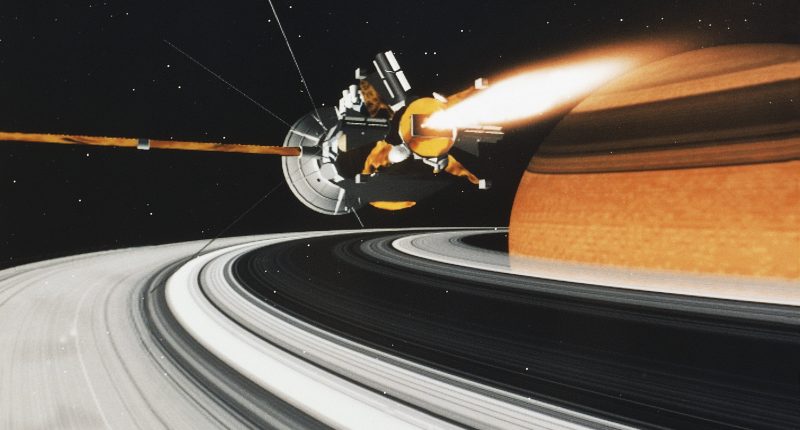SATURN, one of the most recognisable planets in our solar system, will have its iconic rings fade into the darkness in just 18 months.
The gas giant’s rings are understood to be pieces of comets, asteroids, or shattered moons that swing round in Saturn’s powerful gravity pull.
The ring particles mostly range from tiny, dust-sized icy grains to chunks as big as a house.
A few particles can even be as large as mountains.
But according to data from In the Sky, these rings of debris will disappear from eye-view on March 23, 2025.
This is when the next ring plane crossing is due – in a little over 500 days.
READ MORE ON SPACE
During this process, Saturn will tilt on-edge with Earth, making the enormous rings disappear into a faint, almost invisible, line.
When the rings of Saturn are nearly edge-on with Earth, the glare from the rings is reduced considerably, which means faint objects near Saturn are easier to see for astronomers.
The rings won’t be as visible until the next triple ring plane crossing, which is due to occur in 2038.
The Saturn ring plane crossings only occur about every 15 to 17 years.
Most read in Tech
Rest assured, they won’t disappear forever – not yet anyway.
Scientists have long been fascinated by Saturn’s rings, which are thought to be shrinking.
Observations made by Nasa’s Voyager 1 and 2 probes in the 1980s suggested that Saturn’s rings might be eroding, as debris particles collide and disintegrate over time.
Earlier this year, astronomers decided to direct the James Webb Space Telescope at Saturn so they can peer further into the mystery.
They will also be utilising the Keck telescope in Hawai’i.
Their total erosion could take as long as 300million years, so humans hopefully won’t have to update the physics textbooks just yet.
But scientists are trying to make this figure more exact.
Find out more about science
Want to know more about the weird and wonderful world of science? From the Moon to the human body, we have you covered…
This post first appeared on Thesun.co.uk










